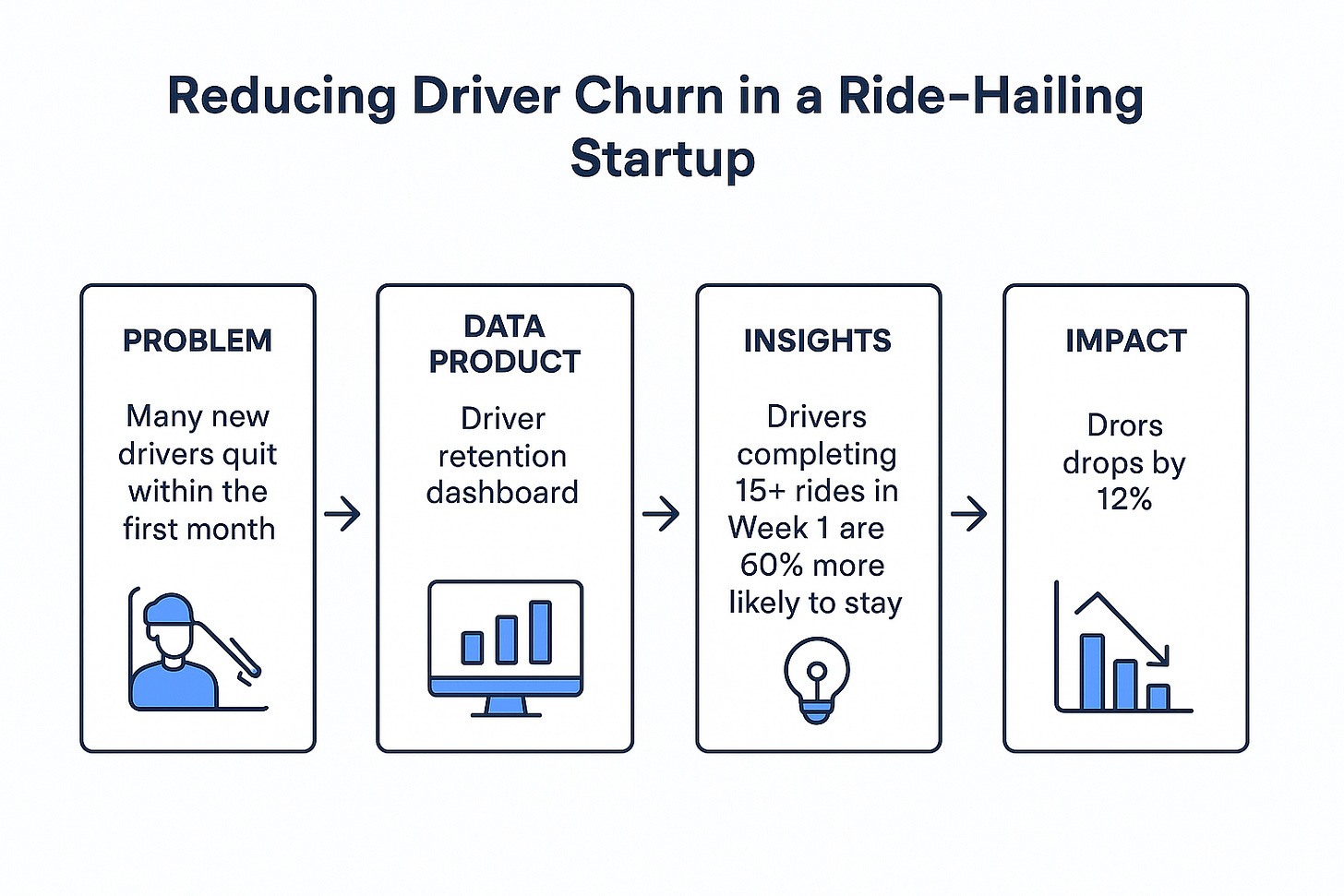The Real Skills Needed for a Data Product Manager
The everyday skills you won’t find in a job description - With a Mini-case study
Data Product Managers (DPMs) sit at the intersection of business, data engineering, and analytics. To succeed, they need a blend of skills:
Technical enough to guide data teams,
Strategic enough to align with business goals and,
Empathetic enough to understand user needs.
🛠️ Core Skills of a Data Product Manager
Data Literacy – Ability to interpret data, know what’s possible, and ask the right questions.
Product Thinking – Defining problems, prioritizing solutions, and building products users actually adopt.
SQL & Analytics – Writing queries, validating datasets, and understanding metrics deeply.
Communication – Explaining data insights clearly to non-technical stakeholders.
Business Acumen – Connecting data features to revenue, cost savings, or growth impact.
Collaboration – Working seamlessly with engineers, analysts, and business teams.
Governance & Compliance – Ensuring data products meet privacy regulations (like GDPR/CCPA), follow security standards, and maintain data quality and trust.
Let’s break it down using Mini Case study
Reducing Driver Churn in a Ride-Hailing Startup
Imagine you are a Data Product Manager at a ride-hailing company like Uber or Lyft.
Problem:
The business team notices that many new drivers quit within the first month. This is hurting supply and impacting customer wait times. They come to you:
“Can you use data to figure out why drivers are leaving so quickly?”
Step 1 – Define the Problem
Before jumping into solutions, you clarify:
What is “driver churn”? → Drivers who stop driving within 30 days.
When does churn happen most? → Data shows 70% of drop-offs occur in the first 4 weeks.
Focus: Improve the early driver experience.
Step 2 – Translate into a Data Product
You partner with data engineers to build a Driver Retention Dashboard tracking:
Rides completed per week
Acceptance rate (how many ride requests a driver accepts)
Average weekly earnings
Hours spent online
This dashboard becomes your “data product” — a tool to answer real business questions.
Step 3 – Analyze & Find Insights
Looking at the dashboard:
Drivers completing 15+ rides in week 1 are 60% more likely to stay active.
Drivers earning below a threshold in week 1 tend to churn faster.
Step 4 – Turn Insights into Action
You communicate clearly to the business team:
“If we help new drivers complete at least 15 rides in their first week, they’re more likely to stick around.”
Operations designs an onboarding incentive program:
Bonus: Drivers who complete 15 rides in week 1.
Extra training: For drivers struggling with their first trips.
Fair ride allocation: Ensures drivers get enough rides to meet targets without bias.
Step 5 – Measure the Impact
Three months later, you track results:
Driver churn drops by 12%
The data product is validated — it solved a real business problem and improved operations.
✅ Why this matters:
This example shows that a Data Product Manager doesn’t just crunch numbers. They:
Translate business problems into data products,
Extract actionable insights, and
Drive measurable business outcomes.

